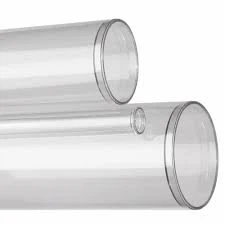Қар . 05, 2024 13:59 Back to list
cpvc pipe
Understanding CPVC Pipe Characteristics, Benefits, and Applications
Chlorinated polyvinyl chloride (CPVC) pipes are increasingly popular in various plumbing and industrial applications, primarily due to their unique properties that make them suitable for a wide range of uses. This article aims to explore the characteristics, benefits, and typical applications of CPVC pipes, providing a comprehensive overview of this versatile material.
Characteristics of CPVC Pipe
CPVC is a thermoplastic material that is produced by chlorinating polyvinyl chloride (PVC). One of the most significant characteristics of CPVC is its ability to withstand higher temperatures compared to standard PVC pipes. While traditional PVC can handle temperatures up to 140°F (60°C), CPVC can manage temperatures as high as 200°F (93°C), making it ideal for hot water delivery systems.
Another notable feature of CPVC is its chemical resistance. CPVC pipes are less vulnerable to corrosion, scaling, and chemical attack than metal pipes, which makes them suitable for various industrial applications, including agriculture and chemical processing. Furthermore, CPVC has a smooth inner surface that minimizes friction, leading to better flow rates and reduced energy costs.
Benefits of CPVC Pipe
The advantages of using CPVC pipes over other materials are manifold. One of the most significant benefits is their long lifespan. CPVC pipes are designed to last for decades, reducing the need for frequent replacements and repairs. This longevity translates to lower maintenance costs in the long run.
Additionally, CPVC is lightweight and easy to install. Unlike metal piping, which can be heavy and cumbersome, CPVC pipes are easy to handle and require fewer tools for installation. This ease of handling not only speeds up the installation process but also reduces labor costs.
cpvc pipe

Another important benefit of CPVC pipe is its eco-friendliness. CPVC is recyclable, which reduces waste in landfills. Moreover, the energy required for manufacturing CPVC pipes is less than that required for metal pipes, making it a more sustainable option.
Applications of CPVC Pipe
CPVC pipes are used in a wide array of applications. One of the most common uses is in residential plumbing systems for hot and cold water distribution. Their high-temperature tolerance makes them a favored choice for kitchen and bathroom installations.
Industrial applications also rely heavily on CPVC pipes, particularly in environments that handle corrosive substances. Chemical manufacturing industries utilize CPVC for transporting a variety of chemicals at elevated temperatures. Additionally, CPVC is commonly used in fire sprinkler systems due to its flame resistance and ability to withstand extreme conditions.
In the agricultural sector, CPVC pipes are used for irrigation systems, ensuring the efficient distribution of water while resisting the harsh chemicals often found in fertilizers and pesticides.
Conclusion
In conclusion, CPVC pipes offer remarkable features that cater to various industries and applications. Their ability to withstand high temperatures, resist chemicals, and provide an extended lifespan makes them a sound investment for plumbing and industrial projects. As the demand for efficient and sustainable materials grows, CPVC pipes are set to play an increasingly significant role in modern infrastructure and construction. Whether for residential use or industrial applications, understanding the benefits and capabilities of CPVC pipes can be invaluable in making informed decisions for any plumbing or piping needs.
-
Premium HDPE Water Supply Pipes: Durable & Leak-Proof
NewsAug.03,2025
-
Premium PVC-M Water Supply Pipe - Durable & Efficient
NewsAug.02,2025
-
Premium PP Welding Rod: GPT-4 Turbo Enhanced
NewsAug.01,2025
-
HDPE Drainage & Irrigation Pipe - Durable, Efficient Solutions
NewsAug.01,2025
-
Premium PVC Transparent Pipe: Durable & Clear Solutions
NewsJul.31,2025
-
High-Quality UPVC Electrical Pipe for Safe Wiring Solutions
NewsJul.30,2025

